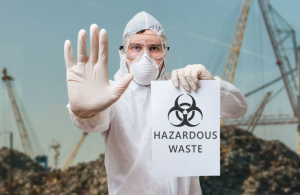Environmental contamination presents a serious danger to the health of communities and ecosystems. Environmental remediation is the practice of reversing or halting environmental damage, often focusing on cleaning up harmful materials. When spills, leaks, accidents, or improper disposal practices contaminate soil, water, air, or other parts of the environment, environmental remediation specialists take action.
Why Environmental Remediation Matters
Our industrial world depends on chemicals and processes that can have harmful side effects. Environmental remediation protects human and wildlife health by addressing risks like:
- Exposure to hazardous materials through direct contact or consumption
- Contamination of the food chain
- Pollution of drinking water sources
Common Types of Incidents That Require Remediation
A variety of situations can trigger the need for environmental remediation services, including:
- Chemical Spills: Accidental release of harmful chemicals into the environment
- Hazardous Waste Mishandling: Issues with storage, transport, or disposal of hazardous waste
- Drum Management: Proper handling, labeling, and disposal of containerized chemicals or unknown substances
- Abandoned Waste: Sites left behind by prior industries, often with contaminants present.
- Natural Disasters: Flooding and other disasters can spread contaminants from industrial sites.
The Environmental Remediation Process
Environmental remediation is the vital practice of cleaning up and restoring sites contaminated by pollutants hazardous to human health and ecosystems.
Key Stages of Remediation
This complex process follows well-defined stages to be sure of comprehensive, safe, and effective restoration of polluted environments.
1. Site Assessment and Characterization
First there is the Preliminary Investigation: A historical review of the site helps identify potential sources of contamination (e.g., industrial cleaning activities, spills, waste disposal). Next, more intrusive investigations: Experts drill into the ground, collect samples (soil, groundwater, sediment, air), and install monitoring wells to determine the extent and type of contamination. Finally comes sampling and analysis: Sophisticated laboratory analysis precisely identifies the specific contaminants and their concentrations.
2. Risk Assessment
Experts evaluate how people or wildlife might come into contact with contaminants (direct contact, drinking water, food chain), also called “exposure pathways.” Potential human health and ecological risks are then calculated based on contaminant types, concentrations, and exposure. This assessment guides cleanup goals.
3. Remediation Plan Development
Various remediation options are evaluated for effectiveness, cost, environmental impact, and regulatory compliance in a feasibility study. A detailed blueprint (the Remedial Action Plan) outlines selected technologies, timelines, monitoring and how our site restoration will be verified. Concerned citizens and stakeholders are also given opportunities to provide input and review these plans.
4. Safety Measures
- Health and Safety Plan: Detailed protocols minimize risks to remediation workers from contaminants, hazardous equipment, etc.
- Environmental Controls: Measures contain contamination during remediation – preventing runoff, dust spread, or air pollution.
- Community Protection: Plans address safety concerns in nearby communities, potentially including air monitoring or access restrictions.
5. Remediation Execution
The chosen technologies are deployed with specialized equipment and skilled personnel and ontaminated materials are disposed of safely at licensed hazardous waste facilities — or possibly treated on-site.
6. Monitoring, Reporting, and Site Closure
Sampling during and after remediation confirms the effectiveness of cleanup. Reports are submitted to demonstrate the success against cleanup goals and relevant laws. Once verified safe, the site may be closed or repurposed, with potential restrictions or long-term monitoring.
Types of Environmental Remediation
The ways environmental remediation companies, like Specialized Waste, deal with environmental hazards change according to the situation and area.
Soil Remediation
- Excavation is the direct removal of heavily contaminated soil for off-site disposal or treatment.
- Soil Washing flushes out contaminants with water and chemicals.
- In Bioremediation, microorganisms are used to degrade organic pollutants.
- Thermal Desorption simply means heat volatilizes or destroys contaminants.
Groundwater Remediation
- Contaminated water can be pumped to the surface and treated (“pump and treat”).
- With Air Sparging, injected air strips the volatile contaminants from groundwater.
- Microbes degrade contaminants in situ with bioremediation in this field.
- Permeable Reactive Barriers are underground walls made with reactive materials that actually treat the groundwater as it flows through.
Air Remediation
- Contaminated air is passed through water, transferring pollutants, in a process called Air Stripping.
- Vapor Extraction pulls contaminated air from the soil for treatment.
- And in Carbon Adsorption, contaminants stick to activated carbon filters as they pass through.
Sediment Remediation
- Dredging is the name for the mechanical removal of contaminated sediment from water bodies.
- Contaminated sediment is covered with a clean layer, “capping it” and isolating it.
- We may also enhance the natural recovery process with materials to accelerate the natural breakdown or immobilization of pollutants.
Reliable Environmental Remediation Services in Houston, Texas
Industrial operations throughout the Houston and Gulf Coast areas rely on specialized companies for environmental remediation services. Choosing an experienced environmental remediation company is crucial, especially in emergency response situations.
Specialized Waste Systems, a leader in total waste management since 1978, provides comprehensive environmental remediation solutions. Partnered with TAS Environmental Services, we offer:
- Thorough site assessments and remediation planning
- Skilled technicians and advanced technology
- Safety-focused solutions and regulatory compliance
- Emergency response and cleanup capabilities
Environmental remediation is essential to maintaining a healthy planet and fostering thriving communities. By understanding environmental remediation and working with qualified environmental remediation contractors, industrial businesses can uphold their environmental responsibility and minimize harm.




